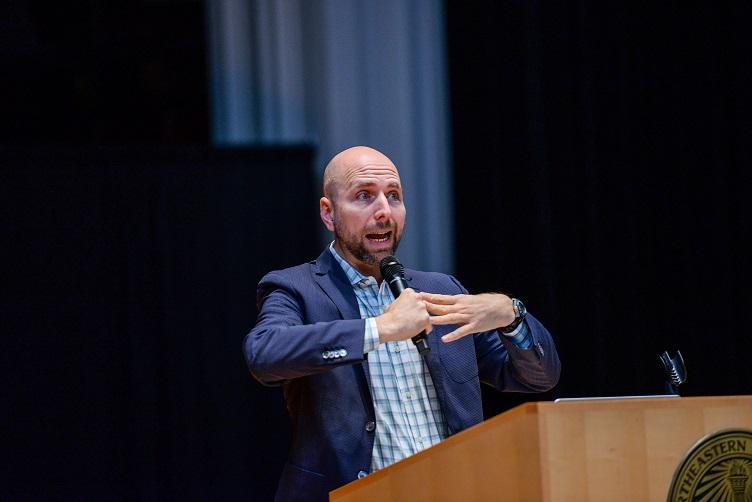By Sahan Weerakoon, news correspondent
Last Friday, Northeastern University’s Fenway Center welcomed artists, scholars and curators from all over the country who took part in a one-day symposium titled “After Black Mountain College: Community and Collaboration.”
The symposium, organized in collaboration with the Institute of Contemporary Art Boston (ICA), examined the influence of Black Mountain College (BMC), a small experimental college which transformed avant-garde art in the US and greatly impacted mid-20th Century American culture. The talk featured the perspectives of artists, art historians and curators as a supplement to the ICA exhibit currently running about the college titled “Leap Before You Look: Black Mountain College 1933–1957.”
BMC produced some of the most visionary artists of the 20th Century, including composer John Cage, modern dance Choreographer Merce Cunningham, Architect Buckminster Fuller and a multitude of other professionals. The school pioneered a form of experimental education which fused an interdisciplinary fine arts and liberal arts curriculum with a communal atmosphere.
The first talk, “Lost and Found: Translation, Production and Participation,” focused on how the multidisciplinary artistic practices of BMC created new forms of cultural production distinct from studio-driven art making.
Gloria Sutton, assistant professor of art history at Northeastern and an organizer of the symposium, emphasized how BMC showed the future of art could be retrospective.
“The most forward-looking perspective is looking backward,” Sutton said. “Film cameras were a new technology [in the early 20th Century] that made moving images from still images. It’s about this ingenuity, this innovation and this creativity.”
“Experiential Art and the Performance of Life,” the second component of the symposium, emphasized the specific practices which made BMC popular among the independent artist community.
“For the most part, I think it was a feedback loop: hearing from friends, and friends of friends, about the atmosphere of experimentalism, about the rigor and seriousness of the work and about the bucolic site,” Bree Edwards, director of Northeastern’s Center for the Arts and curator of a 2006 BMC event series in Asheville, N.C., said in an email to The News. “All of these and myriad individual details surely attracted people down to BMC.”
The third talk, “Makers of Influence,” observed that, unlike most institutions of the time, students and faculty at BMC included minorities and refugees.
The final talk, “Competitive Pedagogies and Utopia,” examined the utopian views of BMC and how it successfully created a social form of teaching and learning.
The speakers were quick to bring up the strength of BMC, as it flourished in spite of World War II and the Great Depression.
“There was very little money, yet theirs was a rich culture of self-entertainment: putting on theatrical productions, making their own costumes and painted sets, throwing lively parties with dancing, music and singing,” Edwards said. “It’s proof that you don’t have to have money to have fun,”
The symposium concluded with a chance for attendees to have a final discussion and learn more about the exhibition in an open and approachable question and answer format.
“It was fascinating to hear the background on the exhibition and the planning that went into creating the exhibition,” Jameson Johnson, a sophomore communications major, said. “I think it’s always important to recognize significant changes in thinking, which is exactly what BMC did.”
Photo by Scotty Schenck









